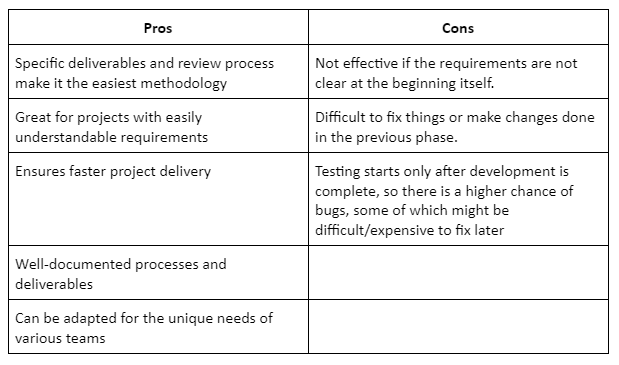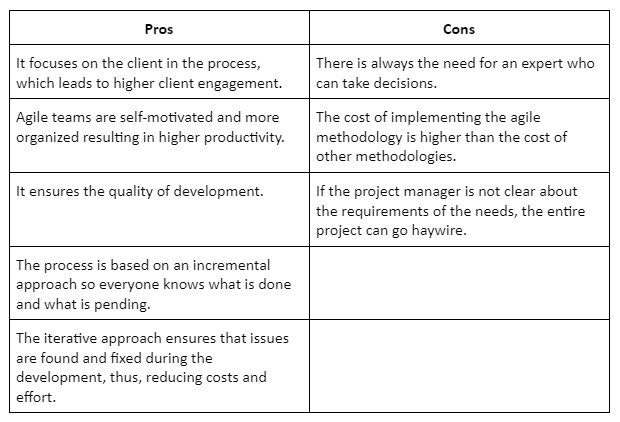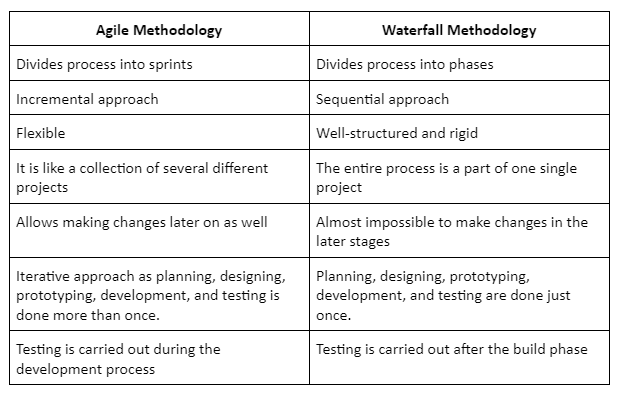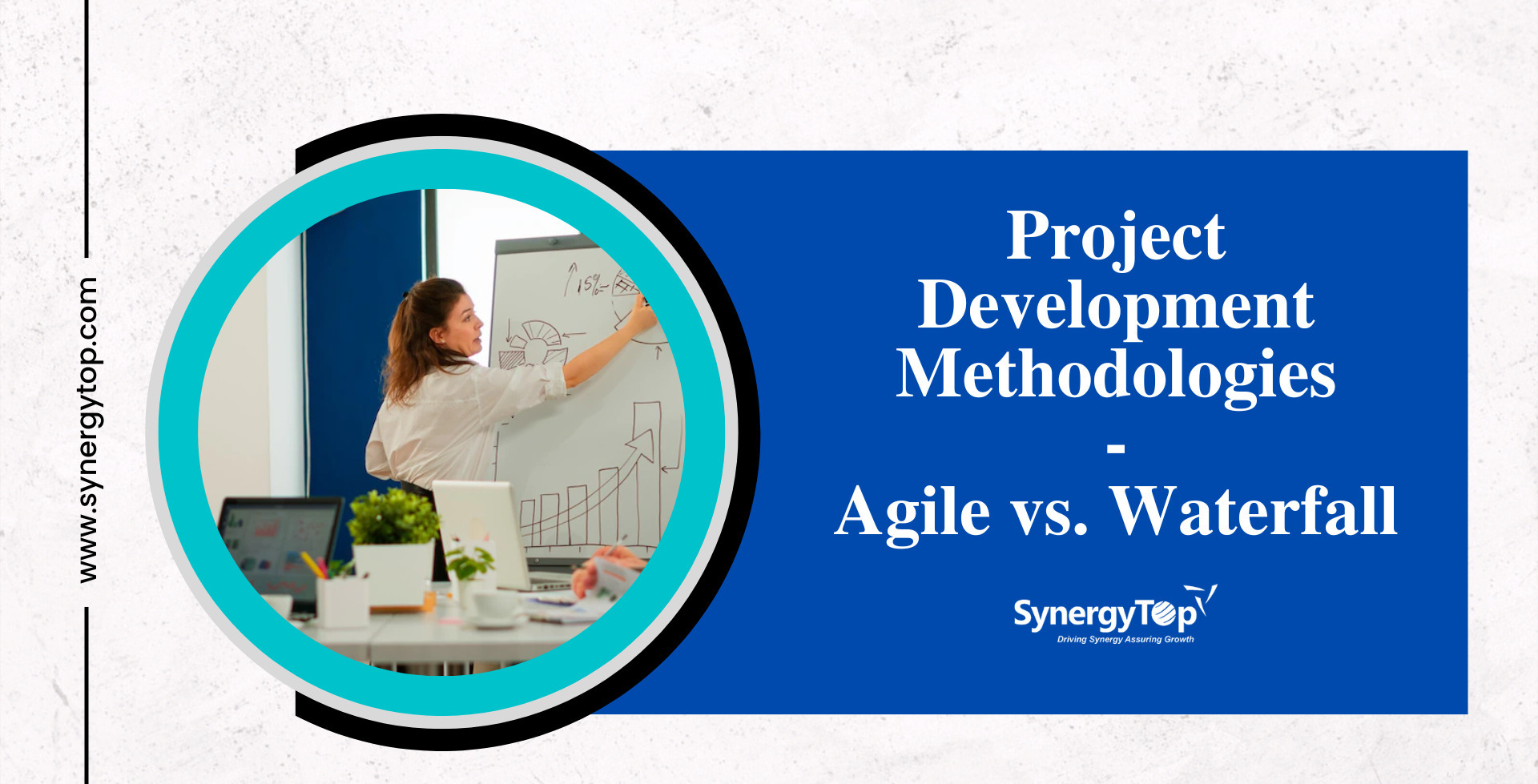Agile vs Waterfall – The battle has been on and raging for quite a while now. So which project development methodology – iterative agile or sequential waterfall – should you choose? Find the answers right here.
Plus, find more project management methodologies for you to choose from if these two don’t fit your needs.
Software development is a process that requires a lot of investment. This investment is in terms of time, money, and of course, effort. To ensure the best outcomes, you need to adhere to well-defined processes in line with the software development life cycle (SDLC).
These SDLC processes outline the various phases of development and showcase how a smooth transition will be ensured between the phases.
Now there are a lot of project management methodologies that you can use for your software development needs. These may also be used for web or mobile app development.
Two of the most popular methodologies are Agile project management and Waterfall project management.
Both have several advocates.
Both have been used by several practitioners.
And both have yielded successful results.
So then you can pick either one with the toss of a coin and hope for sure shot success, right?
No.
The success or otherwise of a development project depends on the suitability of the project management methodology that you use.
Thus, it is important to pick the one that best meets the needs of your project and team.
Below we have elaborated upon the two most popular methodologies – Agile and Waterfall – and compared the two on various grounds.
Check out the comparison to find the more suitable one for your business needs.
What is the Waterfall Project Management Methodology?
Waterfall project management is a simple and straightforward method of project management. It is also sometimes referred to as the Software Development Lifecycle (SDLC).
A linear cascading down process, the waterfall project management methodology mirrors the flow of a waterfall, hence the name.
The waterfall methodology involves connecting tasks with dependencies. This means that to start any task, the previous task has to be completed first.
This ensures clear, ongoing communication and the tasks stay on track.
Who should use the waterfall methodology of project development?
This waterfall project management methodology is best suited for larger projects. More so, when a lot of stakeholders are involved in tracking tasks. That’s when progress is simple with Waterfall project management.
The Pros And Cons Of Waterfall Development Methodology
Below we will explore the pros and cons of waterfall project management.

What Is Agile Project Management Methodology?
Agile is no doubt one of the most popular project management methodologies. But in reality, it is less of a methodology and more of a principle. Nonetheless, experts (individuals as well as companies) continue to use Agile project management to achieve their development goals.
An iterative and data-backed methodology, Agile uses a collaborative approach, which is both fast and effective. Further, it values individuals more than the processes.
While agile project management methodology is popular, in terms of actual implementation, it is often combined with other methodologies like Scrum, Kanban, etc. to ensure a tangible plan and a well-rounded philosophy for project management.
Who should use the Agile methodology of project development?
Almost any team can use the agile project management methodology. That’s primarily because its principles are universal.
The Pros And Cons Of Agile Development Methodology
Below we have highlighted the Agile methodology pros and cons, which will help you assess its suitability for your requirements.

Agile vs Waterfall – Quick Comparison
Here’s a quick comparison of the Waterfall and Agile methodologies of project management. This detailed project management methodologies comparison will help you understand the difference between Waterfall and Agile methodology and which one is the most suitable project management methodology for you.

Based on this objective project management methodologies comparison, the difference between Waterfall and Agile is now clear and you can select the right methodology based on your needs and not just on popular buzz.
Some Other Project Management Methodologies To Consider
Once you have understood the Agile methodology pros and cons and the pros and cons of Waterfall methodology, you should be able to understand which one is more suitable for you.
However, if the two mainstream project management methodologies don’t meet your needs, don’t worry. While Waterfall vs Agile is the most popular debate, there are several other project management methodologies that you can try for your software or app development project. Here are some options for consideration.
1. Scrum
Scrum is a methodology that involves short sprints that are used to create a project cycle.
- Scrum sprints span one or two weeks and are organized with fewer than 10 members.
- The key principle of Scrum is that the tasks are broken down into dependencies.
- A Scrum Master or project manager leads the daily sprints, demos, and meetings.
- Scrum is closely associated with the Agile methodology due to its emphasis on collaboration.
- Scrum works great for both small and large teams as the teams are anyway divided into smaller groups.
2. Kanban
The Kanban methodology uses visual elements (especially boards) to visualize workflows and the process of the project.
- Using the Kanban methodology reduces bottlenecks in the project management process.
- Software tools can be used to implement the Kanban method of project development, where the various boards can be created, edited, and dragged to the required place. It is not a necessity to use software though.
- Kanban methodology is best suited for remote-first or hybrid teams. The visual representation of the process helps everyone stay on track, no matter if they are geographically apart.
3. Six Sigma
Technically, Six Sigma is more of a philosophy than a project development methodology. And it is usually used for Quality Management. However, it can be combined with the Agile methodology, called Agile Six Sigma, and be used for project management.
- The key principle of Six Sigma is to eliminate defects and improve the process.
- Six Sigma involves continuous improvement in processes which results in cost reduction, high productivity, and informed decision-making.
- Large organizations (with over 100 employees) are in the best situation to benefit from Six Sigma as that’s when removing waste from processes can yield the greatest advantages.
Making The Final Choice
Choosing the right project management strategy is the first peg of driving your software or app development project to success.
We, at SynergyTop, follow an Agile methodology to deliver our projects. However, if there is another project management methodology that is better suited to your project requirements, our team won’t shy away from diverging from the usual course.
Our ultimate goal, always, is to ensure successful project delivery.
If you are not sure what management methodology would be the best suited for your business, talk to our experts. We have a team of certified and experienced project managers and coordinators who can help you decide on a suitable methodology and then get the desired results.
Schedule your consultation today and get started toward your business goals.
















